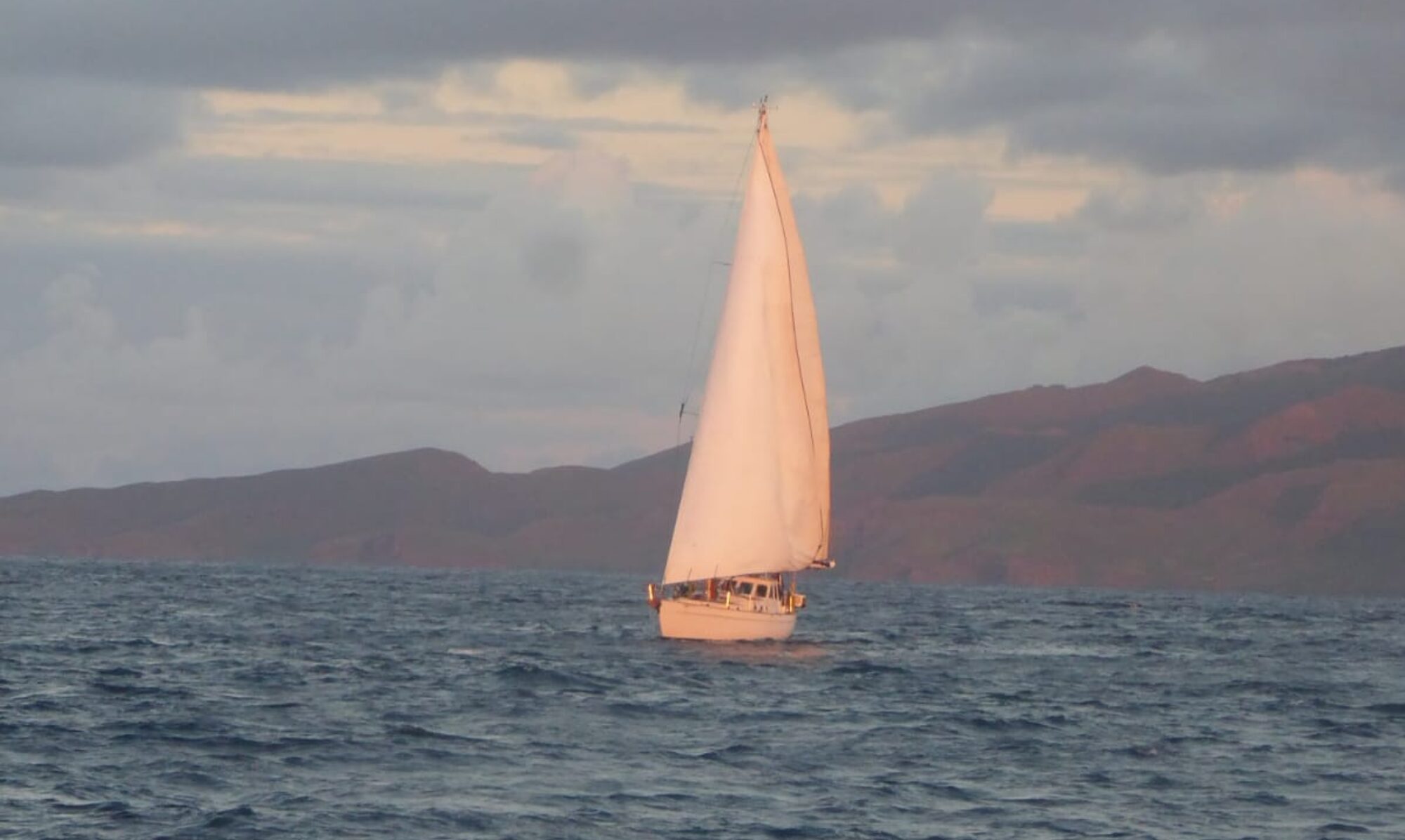We left you last time in Portugal. This time we head further east and cross in to the Mediterranean. First stop the Spanish port of Cadiz.
Waiting for the right wind always pays off and we had a wonderful downwind sail from Portimao to Cadiz. Arriving in Cadiz was a little tricky in the dark though. Its a shallow river entrance full of dangerous shoals, and at night you cant see any of the Navigation lights as they are obscured by all the shore lights. Still we dropped the hook in a large anchorage right underneath the new Cadiz bridge








As you can see, it was very industrial and a hard working port. A real contrast to the town of Cadiz itself that is one of the oldest continuously inhabited towns in Western Europe with remains spanning back to the 12th century BC. Its a strange place, situated on a narrow strip of land surrounded by the sea, and now an ancient town surrounded by a modern concrete jungle.
John from Rival Spirit arrived just after us, and after a day of recovery from our trip we set off to explore.
The walk in to Cadiz was pretty dreary, past the docks, but it was well worth the effort to see this glorious old town of narrow winding alleys connecting beautiful plazas. We spent the day just wandering in the Spanish heat. We visited the museum to see the Phoenician and Roman artefacts. We found the fort that guards the North of the peninsula, sat and drank beer by the Cathedral and wandered through the medieval quarter with the roman amphitheatre still partially buried under medieval houses.
Here’s a flavour of the day in pictures










We must have walked about 10 miles that day. All of us agreed Cadiz was well worth the effort and we highly recommended a visit if your ever in the area.
A few days later and the wind was right to get us to Gibraltar. We set off at first light in to the river and out past Cadiz to be met by huge seas. Poor Azimuth was getting chucked around like a cork. It settled down a little bit as the wind swung behind us, but we were in for a pretty rough day. Here’s a short video I took as we passed Cape Trafalgar (yep the place where the battle was fought!)
The wind actually died by the time we got to the entrance to the straits. But then picked up with considerable force as we approached Gibraltar. The current is really strong in the straits too and we were joined by some canoeists who were keeping pace with us (we were doing 9 knots!) As we approached the Rock, we found ourselves with 35 knots on the beam. The autopilot gave up, so I grabbed the wheel and hung on. We whisked through all the tankers, ferries, fishing boats, ribs and other small craft in Gibraltar Bay sometimes touching 12 knots. Eventually it calmed enough to get the main sail down and get to an anchorage. Crazy sail!






The next day with the wind due to swing to the East and freshen we moved to La Linea on the border with Gibraltar. We had no luck getting in to a marina in Gibraltar, they are full to bursting. Still the La Linea anchorage (which was to be home for well over a week) was actually ok with a good view of the Rock




We took a couple of day trips to Gibraltar. You have to go through customs to enter, then cross the runway on foot!


We spent the morning wandering around the main street area.


Ailsa had a dentist appointment which turned out to be very good and they fixed a long term problem she had been having. After lunch we headed up towards the cable cars to take the trip to the Upper Rock Nature Reserve.



We were accosted by many salesman trying to sell us a tour by minibus which in the end we opted for and were happy we did. It was a great trip!
First we went to St Michael’s Cave, to see the spectacular formations






In the cave there is a huge auditorium where you can see live concerts. We reckon that would be an amazing experience.
Next we headed right to the top of the rock to walk the glass skybridge and see the Barbary macaques monkeys.















Our driver seemed to know a few of the monkeys very well and they were comfortable climbing all over us!
We visited the windsor suspension bridge, which seems to be a completely pointless bridge from nowhere to nowhere?!




Finally we visited the North end of the rock for some more views before heading back to town for evening drinks with John who had just arrived in Gibraltar that afternoon



We got back late across the border in the dark to find our dinghy had a puncture! Stressful end to the day trying get back to the boat!
A couple days later (with the dinghy fixed) we headed back to Gib to meet up with John for farewell drinks. He will be staying in Gibraltar this winter and we wish him all the best. Its been a lot of fun sharing our adventures together in Spain and Portugal and we shall miss him. John, you will always be welcome onboard Azimuth anytime!



Right now we are still in La Linea doing some boat jobs and getting ready to do the four day sail to Madeira. Join us next time!
















































































